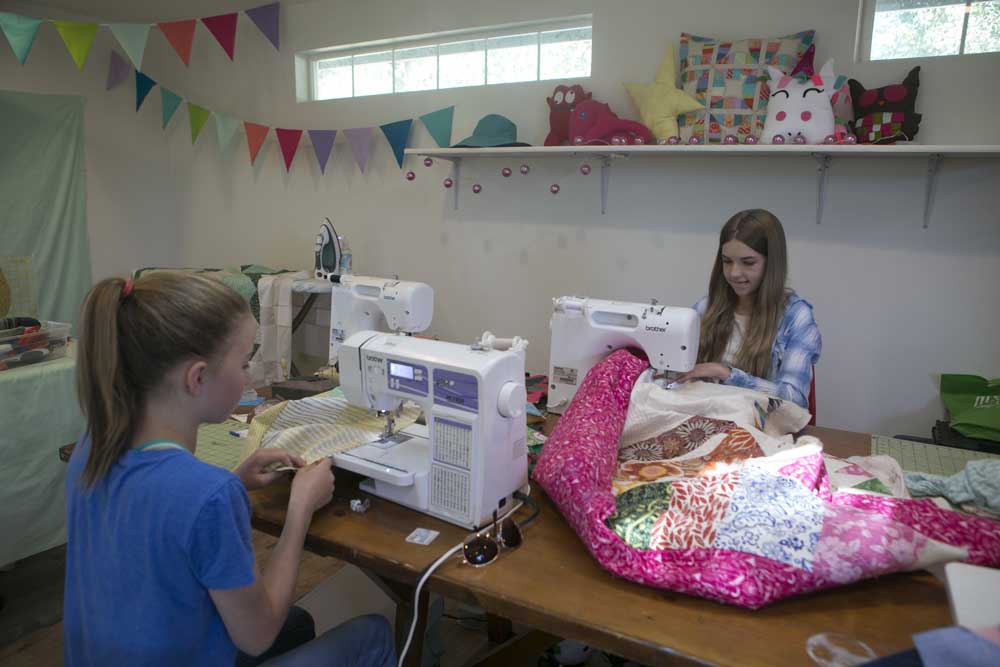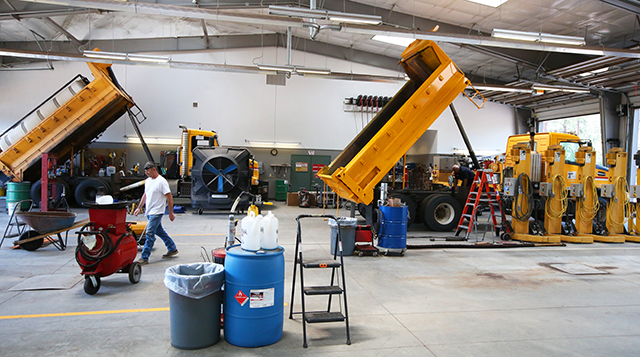Five Smiths And A Couple Of Rabbits Later
Published 12:00 am Thursday, July 26, 2018

- Five Smiths And A Couple Of Rabbits Later
When her three daughters wanted to raise rabbits, Becky Smith resisted—for a while.
“I held off as long as I could,” Smith said. “I wasn’t raised with 4-H, so I wasn’t sure what I was getting into.”
Trending
But Smith came from a family of what she calls “makers.”
“My mom could do anything,” she said.
When she realized her girls were serious, Smith rose to the challenge, started the High Desert 4-H Rabbit Club, and became its leader. It’s just one of the ways Smith is passing on a legacy of self-sufficiency to her daughters, as well as members of the four clubs she and her husband, Lled, now run.
The Smiths are a fearless family that jump in with both feet. Rabbits were only the start of their involvement in 4-H. They quickly saw the organization, which helps kids develop life skills, as a way for their daughters, Harper, Quincey, and Lilly, to learn, have fun, and develop confidence.
While 4-H originated in rural communities with a focus on agriculture, times have changed. Kids can still choose agriculture and animal science projects, but there are now options in a wide variety of arts and science-based programs, including rocketry, engineering, and industrial arts. And today you’ll find clubs in urban and suburban settings as well as farming communities.
“You don’t have to have a farm to be in 4-H,” Quincey said.
Trending
Now, in addition to rabbits, the Smiths lead 4-H clubs in photography, robotics, sewing, and quilting. Harper, age 15, is also involved in expressive arts such as graphic design, sketching, and watercolor painting. Quincey, age 13, participates in dog 4-H, working on showmanship and obedience with the family’s Labrador retriever, Talullah. She and her younger sister, Lilly, age nine, are also trying their hand at cake decorating and needle felting.
While monthly meetings bring members together to work on projects and strengthen social bonds, the big deal is fair. Fair is shorthand for the Deschutes County Fair & Rodeo—it’s the culmination of the year’s work, a chance for kids to show off their stuff, gain experience, and measure their skills through competition.
The fair experience also encourages independence. After parents help their kids transport animals and other exhibits to the fair, they step back. 4-H members and their younger counterparts (called Cloverbuds) answer judges’ questions, turn in record books of their projects, and care for any animals they’ve brought to the fairgrounds.
“It’s all theirs,” Smith said. “It pushes the kids to be independent.”
Lilly, Quincey, and Harper have also learned the ins and outs of showing rabbits.
“It’s really about how you present yourself,” Harper said. “You place your rabbit on a table in front of a judge, position it to show off its best features, and then answer the judge’s questions.”
Anything can happen when you’re showing animals, and learning to respond with grace under pressure is just one of the benefits of showmanship.
“One year I showed chickens,” Lilly said. “I had a big chicken, put her on the table in front of the judge, and she flew off into the crowd.”
Lilly laughs at the memory. While naturally outgoing, with a keen sense of humor, competing has helped her to develop resilience.
Besides showing their animals at the fair, the Smith girls will exhibit photography (Talullah is a favorite subject), sewing, quilting, and robotics projects—but that’s not all. Several of Harper’s knitting projects, including baby hats she made for charity and yarn she spun with a drop spindle, will be entered in competition. Quincey will exhibit a display board from a science experiment she conducted regarding plastic. In addition, she and Lilly will show off their cake decorating and needle felting projects.
Fair is not just about competition—it’s also about cooperation. 4-H members and their parents work side by side in the kitchen of the Over the Clover Café, preparing and serving food to hungry fairgoers. Quincey especially loves the work.
“I’d like to start a food cart of my own, for people with food sensitivities like gluten and dairy,” she said. “It would be great to be able to eat anything on the menu.”
As part of the 4-H Leadership Team, Harper and Quincey work with other 4-H members to help run the 4-H side of the fair, including livestock exhibits and static exhibits such as photography and artwork.
“It’s a great bonding experience, working together,” Harper said.
Her involvement in 4-H has led Harper to take her passion for quilting one step further. She’s now working as an intern for QuiltWorks, a local quilting shop. She’s also used funds from a 4-H scholarship, the Ralph McNulty Scholarship, to buy the materials for an elaborate elephant-themed quilt that uses more than 50 different fabrics, appliquéd together.
With encouragement from their adult mentors, the girls and other members of the High Desert Trackers 4-H club have taken their robotics projects beyond the fair, presenting demonstrations and hands-on robotics stations at two 4-H Idea Fair workshops, as well as the Downtown Bend Library and the sixth-grade class at St. Francis School.
Back to the bunnies, where it all began. Every month Harper, Quincey, and Lilly accompany their rabbits to the Fox Hollow Retirement Community in Bend, where the residents look forward to snuggling the cuddly creatures and visiting with the girls.
“They love them!” Harper said. “It’s so rewarding.”
Indeed, the girls are learning how important it can be to brighten someone’s day.
What began with bunnies has become a life-changing experience worth more than ribbons and awards. As a new generation of 4-H members, the Smith girls are working to better themselves and their community. And they’re doing a fine job of it.








